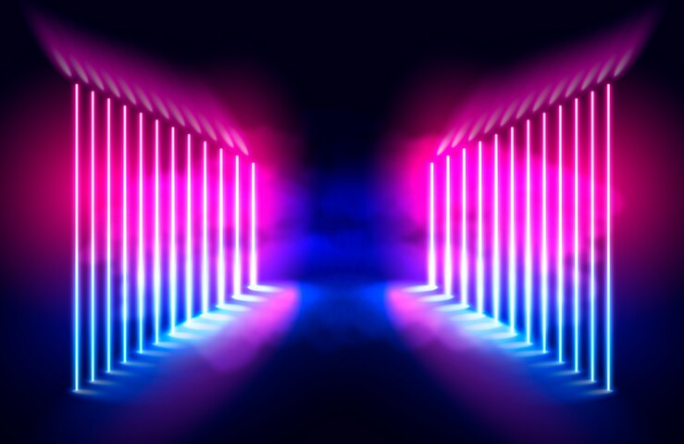
Table of Contents
Introduction to Cyanová
What is Cyanová?
Cyanová is an innovative and cutting-edge technology designed to enhance color accuracy and efficiency by utilizing a specialized combination of cyan, green, and blue light. It provides a superior alternative to traditional RGB (Red, Green, Blue) systems by broadening the spectrum of visible light to create a more vibrant and true-to-life color reproduction.
Traditional RGB color models rely heavily on the dominance of red hues, which can sometimes limit the depth and precision of certain colors, especially when rendering hues like turquoise, emerald, or deep blues. Cyanová solves this problem by prioritizing cyan, along with green and blue, ensuring a broader spectrum of colors can be rendered with increased accuracy. This has opened new possibilities for industries that rely heavily on color fidelity, such as graphic design, photography, film, and display technology.
The History of Color Reproduction Technology
Color reproduction technology has undergone significant transformations over the years. From the basic understanding of primary colors to the invention of the RGB system, our ability to manipulate and reproduce colors has continually evolved. Early color systems were limited in their ability to capture the richness and depth of the visual world. However, with advancements in display technology and color theory, new systems like Cyanová have emerged, promising even greater accuracy.
The Evolution from RGB to Cyanová
RGB (Red, Green, Blue) has long been the standard model for color reproduction in digital media. However, as display and image processing technologies advanced, it became clear that the RGB model was somewhat limited in its ability to represent a wide range of colors, particularly in terms of hue, saturation, and vibrancy. Cyanová emerged as an answer to this limitation, expanding the available color spectrum by focusing on cyan, green, and blue light.
The Science Behind Cyanová
Light and Color: How We See
Understanding how Cyanová works requires a basic understanding of how light and color function. Our perception of color is based on the reflection and absorption of different wavelengths of light. When light hits an object, certain wavelengths are absorbed while others are reflected. The colors we see correspond to the wavelengths that are reflected into our eyes.
Cyanová takes advantage of this by enhancing the wavelengths associated with cyan, green, and blue light, providing more precise control over how these colors are perceived.
The Role of Cyan, Green, and Blue Light in Cyanová
In the Cyanová system, cyan takes center stage as the primary component, with green and blue supporting its role. This contrasts with traditional RGB systems, where red often dominates. By focusing on cyan, Cyanová opens up a broader range of colors, providing more accurate and lifelike representations, particularly in the blue-green color spectrum.
Technical Aspects of Cyanová Technology
Cyanová works by manipulating light at a fundamental level. It requires specialized LED displays and image processing algorithms to maximize color accuracy. Cyanová displays are designed to work with light wavelengths between 490 and 570 nanometers, where cyan and green light are most effective. This ensures that colors within this range are rendered with unprecedented fidelity.
Advantages of Cyanová Over Traditional RGB Systems
Increased Color Accuracy

One of the primary advantages of Cyanová over traditional RGB systems is its enhanced color accuracy. By focusing on a broader spectrum of light, Cyanová can reproduce colors that RGB systems struggle with, such as turquoise, aqua, and teal. This makes Cyanová especially useful in industries like graphic design, where accurate color representation is crucial.
Broader Color Spectrum
Cyanová expands the color spectrum beyond the limitations of RGB. This broader spectrum allows for more vivid and dynamic color displays, making images appear more lifelike and engaging. In addition, colors that are difficult to achieve with RGB, such as shades of cyan and green, are easily represented with Cyanová.
Enhanced Visual Efficiency
Cyanová also improves visual efficiency, reducing eye strain for users. Displays utilizing Cyanová technology produce colors that are easier on the eyes, making them ideal for extended use in devices like smartphones, laptops, and monitors. The accuracy of color rendering reduces the visual fatigue associated with prolonged exposure to bright, unnatural colors.
Applications of Cyanová
In Display Technologies
Cyanová has significant applications in display technology, from high-end monitors to televisions and smartphones. Its ability to produce lifelike colors enhances the visual experience, making it highly sought after in consumer electronics.
In Photography and Film
The film and photography industries rely on accurate color reproduction to convey emotion, mood, and visual appeal. Cyanová offers a significant advantage in this area, ensuring that captured and projected images maintain their true-to-life vibrancy.
Use in Virtual Reality and Gaming
In virtual reality (VR) and gaming, immersive experiences rely heavily on realistic visual effects. Cyanová technology enhances the depth and richness of colors, creating more engaging and immersive worlds for players.
Applications in Graphic Design and Printing
Graphic designers and printers benefit from the enhanced color accuracy of Cyanová, particularly when working with color-critical projects such as branding, advertising, and digital art. Cyanová’s broad color spectrum ensures that the final product matches the intended design.
Cyanová vs. Traditional RGB: A Comparison
Key Differences Between Cyanová and RGB
The primary difference between Cyanová and RGB lies in their focus on specific color wavelengths. While RGB prioritizes red, Cyanová emphasizes cyan, allowing for a broader range of colors to be accurately represented.
Performance in Color Accuracy and Brightness
Cyanová outperforms RGB in terms of color accuracy and brightness, particularly in the green-blue spectrum. This makes it ideal for applications requiring precise color reproduction.
Longevity and Energy Efficiency of Cyanová Displays
Cyanová displays are also more energy-efficient compared to traditional RGB systems. By optimizing the use of light and color, Cyanová reduces power consumption, making it an eco-friendly alternative for displays.
The Impact of Cyanová on Industries
Revolutionizing Consumer Electronics
The consumer electronics industry is perhaps one of the largest beneficiaries of Cyanová technology. From smartphones and televisions to computer monitors and tablets, the demand for devices with superior display capabilities has never been higher. With its ability to produce highly accurate colors and reduce eye strain, Cyan-ová is quickly becoming the go-to technology for manufacturers looking to offer premium visual experiences.
Users of smartphones equipped with Cyanová displays, for example, benefit from seeing true-to-life photos, videos, and user interfaces. In an era where consumers are spending more time than ever in front of screens, whether for work, socializing, or entertainment, Cyan-ová is set to become an essential feature in consumer electronics.
The Role of Cyanová in Healthcare Imaging
Healthcare is another industry where precise color reproduction is critical. Medical imaging, such as MRIs, CT scans, and X-rays, relies on accurate visual representation to diagnose and treat patients. Traditional RGB displays sometimes fall short in rendering the exact colors necessary to highlight specific details in medical scans. Cyanová, with its wider and more accurate color spectrum, allows healthcare professionals to see clearer, more detailed images, which can lead to better diagnoses and improved patient outcomes.

Additionally, Cyanová technology is being explored for use in surgical displays. In the operating room, surgeons need to rely on highly accurate images from medical cameras and imaging devices. With Cyan-ová, the improved color accuracy helps reduce errors in visually guided procedures.
Transforming the Art and Design Industry
The art and design world thrives on creativity, color, and precision. Graphic designers, artists, and illustrators rely heavily on color accuracy to create visual content that aligns with their artistic vision. Cyan-ová technology is transforming the creative landscape by offering enhanced color depth and greater representation of hues that were previously difficult to reproduce on digital screens.
For digital artists, this means they can now work with a broader color palette, ensuring that their designs look just as stunning on-screen as they do in print. For designers working in fields like fashion or branding, where color can make or break a project, Cyan-ová provides the confidence that their final product will be accurately represented in all mediums.
The Future of Cyanová Technology
Ongoing Research and Development
Cyan-ová is still a relatively new technology, and significant research and development are ongoing to explore its full potential. Researchers are working to refine Cyan-ová’s light emission and absorption properties, ensuring that the technology can continue to improve in accuracy and energy efficiency. As displays continue to evolve, especially in high-end markets like 8K TVs and OLED displays, Cyan-ová is expected to play a crucial role in the future of visual technology.
Emerging trends, such as foldable displays, wearable tech, and flexible screens, also provide exciting opportunities for Cyan-ová. Its adaptability makes it an ideal candidate for new forms of display technologies that demand both performance and power efficiency.
How Cyanová Can Influence Future Tech Trends
As consumer demands for better display quality grow, Cyan-ová is positioned to become a dominant force in future technology trends. In areas like augmented reality (AR) and virtual reality (VR), where the accuracy of visual rendering is paramount, Cyan-ová’s ability to expand the color spectrum will lead to more immersive and realistic experiences. Users can expect richer environments and more lifelike simulations as Cyanová technology continues to be integrated into AR/VR headsets.
Moreover, with the rise of smart home devices and IoT (Internet of Things) gadgets, having color-accurate displays across all connected devices will become a standard. Cyan-ová’s role in this ecosystem is crucial, as it ensures consistent visual output across various platforms and devices.
Potential Challenges and Limitations
Despite its many advantages, Cyan-ová does face challenges, particularly in terms of mass adoption and production costs. Like any new technology, there are initial hurdles in scaling manufacturing to meet global demands. Currently, Cyan-ová displays are more expensive to produce than traditional RGB displays, which could limit their accessibility for budget-conscious consumers.
Another potential limitation is compatibility with existing software and hardware ecosystems. While Cyan-ová offers superior color accuracy, integrating it into current systems that are optimized for RGB could present compatibility issues that need to be addressed by software developers and hardware manufacturers.
How Cyanová Improves User Experience
Real-World User Benefits
In day-to-day life, users of Cyan-ová displays benefit from more natural and true-to-life visual experiences. Whether it’s browsing the web, watching movies, or editing photos, the enhanced color accuracy leads to a more satisfying and immersive experience. Because Cyan-ová produces colors that are closer to what the human eye naturally perceives, users often report less eye strain and fatigue after prolonged screen time.
Cyanová in Smartphones and Laptops
Smartphones and laptops are two of the most ubiquitous devices in the modern world. As more people work remotely and spend hours on their devices, having a screen that reduces visual stress becomes essential. Cyan-ová’s ability to produce sharp, vibrant colors makes it an ideal solution for these devices. Users can now enjoy clearer photos, videos, and graphics, all while reducing the eye strain associated with prolonged exposure to traditional RGB displays.
Enhanced Accessibility for Color-Blind Users
Color-blindness affects a significant portion of the global population, with many people experiencing difficulties in distinguishing between certain colors, such as red and green. Cyan-ová technology can help mitigate some of these challenges by offering a broader range of colors that are easier to differentiate. With the increased color accuracy and spectrum range that Cyan-ová provides, content creators can design more accessible digital experiences for users with color vision deficiencies, ensuring inclusivity and improved usability.
Implementing Cyanová: Technical Considerations
Hardware Requirements
Implementing Cyan-ová technology requires specific hardware adjustments, particularly in the design of display panels and LED light sources. Manufacturers need to invest in new equipment that supports the emission of cyan, green, and blue light, as well as software that can process and optimize color output for these wavelengths. For companies looking to adopt Cyan-ová, this means upgrading their production lines and potentially increasing costs in the short term, though the long-term benefits may outweigh the initial investment.
Compatibility with Existing Software Systems
For Cyan-ová to be widely adopted, it needs to be compatible with existing software systems that are currently optimized for RGB. This requires updates to software algorithms, particularly those used in image processing, color correction, and video rendering. Software developers may need to create custom profiles for Cyan-ová displays to ensure that images and videos are rendered accurately according to the new color model.
Integration in Large-Scale Display Systems
In large-scale display systems, such as those used in stadiums, advertising billboards, and digital signage, Cyan-ová offers significant benefits in terms of color consistency and energy efficiency. These systems often run for extended periods, making Cyan-ová’s energy-saving capabilities a valuable feature. Additionally, the improved color accuracy ensures that large-format displays maintain vibrant and consistent visuals across a wide viewing angle.
Cyanová’s Environmental and Sustainability Impact
Energy Efficiency Compared to Other Systems
One of Cyan-ová’s biggest selling points is its energy efficiency. By optimizing the light emission process, Cyan-ová displays use less power than traditional RGB systems. This makes them an environmentally friendly option, especially for devices that are used continuously, such as monitors, televisions, and mobile devices. The lower energy consumption not only reduces electricity costs but also decreases the overall carbon footprint of the devices.
Eco-Friendly Manufacturing Processes
In addition to reducing energy usage during operation, Cyan-ová technology is being developed with an emphasis on eco-friendly manufacturing processes. The production of Cyan-ová displays relies on fewer hazardous materials than traditional displays, and the use of recyclable components is prioritized. This makes Cyan-ová a more sustainable option for manufacturers looking to minimize their environmental impact.
Cyanová in Reducing E-Waste
Cyan-ová displays have longer lifespans compared to their RGB counterparts, which translates into fewer devices being discarded prematurely. This contributes to a reduction in electronic waste (e-waste), one of the fastest-growing environmental concerns globally. By creating durable, energy-efficient displays, Cyan-ová helps address the issue of e-waste and promotes more sustainable technology usage.
Conclusion
Cyan-ová is set to revolutionize the world of color reproduction and display technology. With its increased color accuracy, broader spectrum, and enhanced energy efficiency, it is well-positioned to replace traditional RGB systems across a wide range of industries. From consumer electronics and healthcare imaging to gaming and graphic design, Cyan-ová’s impact is already being felt.
As research and development continue, we can expect even more advanced applications of Cyan-ová, with improvements in visual technologies that push the boundaries of what is possible in color rendering. Though challenges remain in terms of production costs and integration, the future of Cyan-ova looks bright, and its potential to transform how we interact with visual content is undeniable.
For more information, visit techpass.ai.
If you found our content helpful don’t forget to share it on your social media: Twitter




One Comment